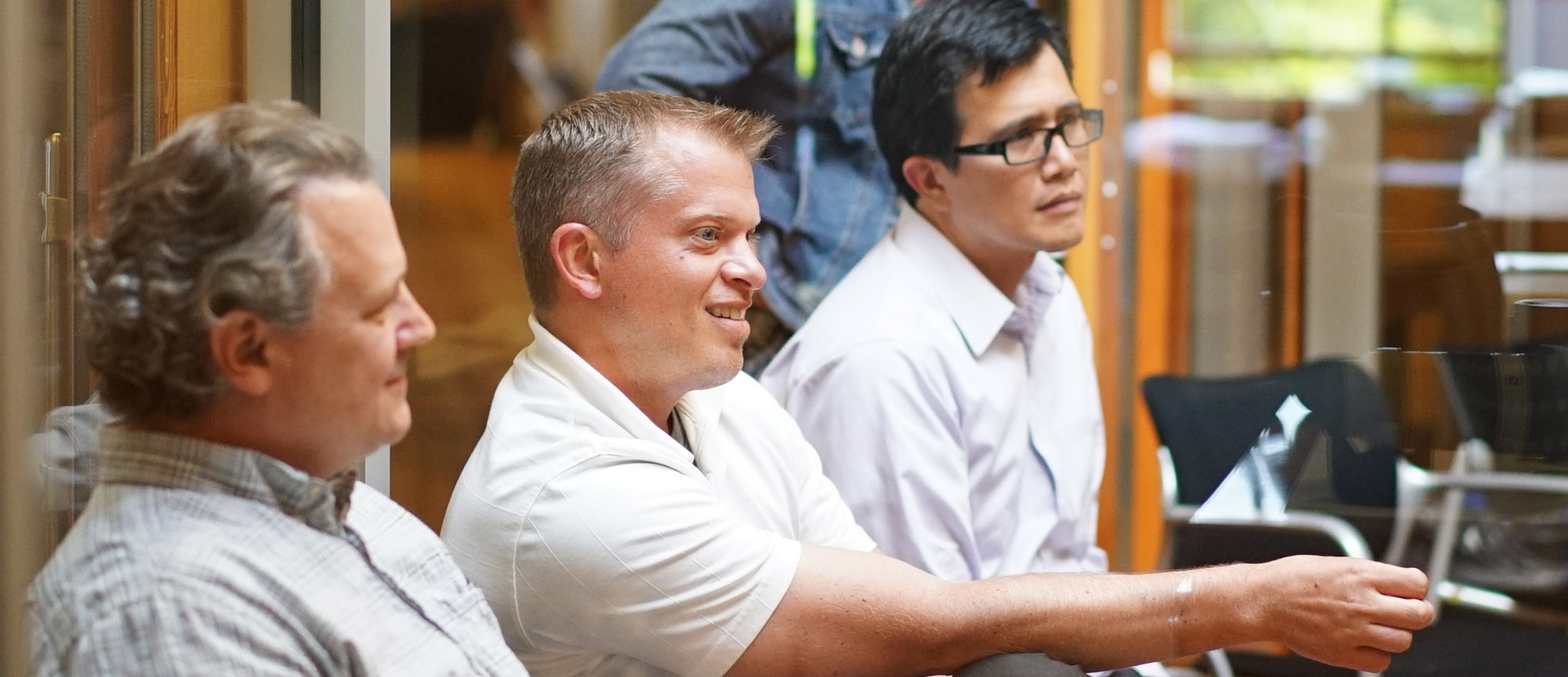What makes a thriving learning environment?
While touring schools at an A4LE conference last year, we visited two buildings that seemed like a stark contrast in terms of what I would call “artifacts” of learning evident in the place. When artifacts of learning are manifest in a setting, it seems like students and teachers are thriving in what they are doing. The artifacts created were likely due to the culture of the teaching going on. But are there aspects of the design of the place that invite the creation of those artifacts and encourage a certain culture? Those are questions that have been on my mind since.
The goal of the session was to compare and contrast the design and culture of two high schools, with only the evidence presented in a short visit. Could we discern the qualities of the physical setting that invite more active learning? Here are two example images of the schools and the comments shared in our discussion…
Del Lago Academy, Escondido

Comments:
- How do I relate to outdoors?
- No natural light.
- The hallway feels like an institution.
- The school has a formal feel.
- Does the school feel more empty because they have an outdoor area?
- Is the corridor used as an extension of the classroom?
- Maybe time of day affected the flow and use of the corridors/hallways.
- The creative area is defined within bounds (chalkboard next to classroom doors).
- The couches in the hallways look sterile.
- Does the curriculum have anything to do with the welcoming affect?
- The furniture does not create a welcoming presence.
- Do teachers feel like they lose control of the space if classroom are more visible?
- The corridors are wide, but the lower ceilings make it feel less open.
High Tech High Chula Vista

Comments:
- Student work is everywhere and we can see into classrooms.
- The building seems to accommodate and compliment the culture of the school.
- The space invites students to put work up, to see inside other spaces, and it feels welcoming.
- There is so much natural light.
- The hallway feels like main street with shops and life.
- The space has a makerspace feel.
- Is school safety a concern? Safety and security limits the number of schools that would do an open concept the way this school has? Some school districts won’t allow such high visibility.
- It looks like students are invited to create and show their work.
- The hallway has a lot more transparency/storefront feel.
- The space feels inviting, like you could participate in what is happening.
- There are big windows that create openness between classroom and social spaces.
- Collaboration zone, feels like a studio.
- The walls seem less precious (there is no gypsum board) so students and staff are able to do what they want with those surfaces.
- Higher ceilings and daylight coming in have a positive impact.
- This project proves you can do a lot more with a lot less money. (The school was designed and built in 9 months.)
- There is serenity in simplicity.
- There is a connection to outside.
- The space feels inviting: be here, there is life
One thought toward the end of the session stood out and I believe got us all thinking about the bigger question(s): Is the architecture fostering the success of the school or is it the curriculum and culture that creates that success? Is it a little of both? What if we did a “School Swap” – would the architecture limit the liveliness of HTH Chula Vista, and in turn enliven Del Lago? How would the students adapt and use the spaces if swapped? What affects a school’s success more: is it more cultural or more architectural?
It’s certainly the people who enliven the environment, but clearly the design of the environment can invite and support an active and communal teaching and learning culture, characteristics we associate with “thriving”.




















